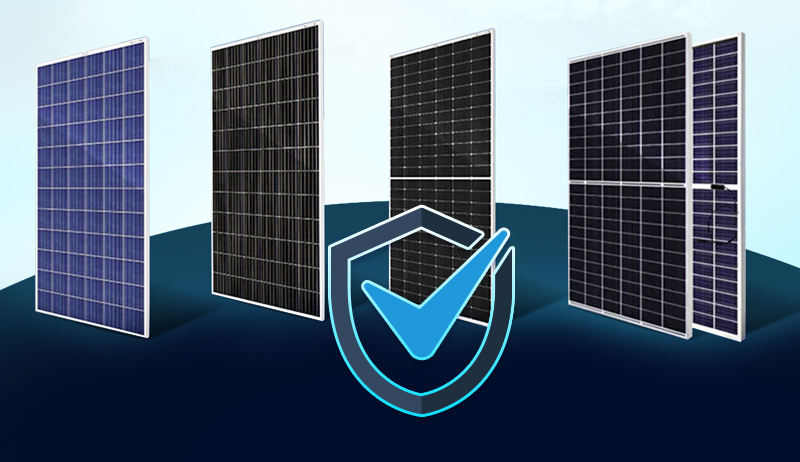Unveiling the Depths: A History of the Mariana Trench
The Mariana Trench, a chasm reaching into the Earth’s crust, has captivated scientists and explorers for over a century.
Its history is a fascinating tale of discovery, technological innovation, and the ongoing quest to understand one of the most extreme environments on our planet.
1875: The First Glimpse
The story of the Mariana Trench begins in 1875 with the Challenger Expedition, a pioneering oceanographic voyage. Using a weighted rope, the crew of the HMS Challenger recorded a depth of 4,475 fathoms (8,184 meters) near the southern end of the trench, marking the first official encounter with this geological wonder. This discovery laid the groundwork for further exploration and solidified the trench’s status as the deepest known point on Earth.
1951: Refining the Measurements
The quest for precise knowledge continued in 1951 with the Challenger II expedition, utilizing more advanced technology like echo sounding. This expedition yielded a more accurate depth measurement for the trench, solidifying its immense depths.
1960: Taking the Plunge
The year 1960 witnessed a historic moment – the first and only crewed descent to the Challenger Deep. Jacques Piccard and Don Walsh, housed in the bathyscaphe Trieste, braved the crushing pressure and descended to the bottom of the trench, forever etching their names in the annals of exploration.
The Age of Unmanned Exploration
Following the daring feat of Piccard and Walsh, exploration shifted towards unmanned vehicles. The Kaiko mission, utilizing remotely operated vehicles (ROVs), provided detailed maps of the trench and captured captivating footage of its unique life forms.
Beyond 2000: A Continued Journey
The 21st century has seen renewed interest in the Mariana Trench. In 2012, Victor Vescovo became the first person to complete a solo dive to the Challenger Deep in his submersible, the Limiting Factor. Ongoing research continues to shed light on the trench’s unique ecosystem, revealing fascinating adaptations of life to the extreme pressure and darkness.
The Future of the Trench
The Mariana Trench remains largely unexplored, with countless secrets hidden beneath its immense depths. As technological advancements continue, we can expect further exploration to unveil the mysteries of this remarkable realm, pushing the boundaries of scientific understanding and potentially offering insights into the origin of life on Earth.
The story of the Mariana Trench is a testament to human curiosity and the relentless pursuit of knowledge. As we delve deeper into this abyss, we gain a deeper appreciation for the vastness and diversity of our planet, revealing a world unlike any other.
The Mariana Trench: Diving into Earth’s Deepest Realm
The Mariana Trench, a crescent-shaped scar in the western Pacific Ocean, holds the title of the deepest point on Earth. Plunging to a staggering 11,034 meters (36,200 feet) at its deepest point, the Challenger Deep, the trench pushes the boundaries of our planet and harbors a unique ecosystem shrouded in perpetual darkness and extreme pressure.
Formation and Location:
The Mariana Trench’s formation is a story of colliding tectonic plates. The Pacific Plate, a massive slab of Earth’s crust, is being subducted, or forced beneath, the smaller Mariana Plate. This process creates a deep depression in the ocean floor, stretching over 2,550 kilometers (1,580 miles) in length and averaging 69 kilometers (43 miles) in width.
Exploration and Discoveries:
Reaching the crushing depths of the Mariana Trench is no easy feat. Only a handful of manned and unmanned missions have successfully ventured into this extreme environment. The most famous of these include:
- 1960: The Bathyscaphe Trieste carried Jacques Piccard and Don Walsh to the Challenger Deep, marking the first and only time humans have reached the deepest point of the ocean.
- 2012: Victor Vescovo, an American explorer, completed the first solo dive to the Challenger Deep in his submersible, the Limiting Factor.
- Kaiko mission: This unmanned exploration utilized remotely operated vehicles (ROVs) to map the trench and capture footage of its unique life forms.
These explorations have revealed a surprising diversity of life adapted to the harsh conditions of the trench. From bioluminescent creatures that generate their own light to bizarre, elongated fish and resilient microbes, the Mariana Trench ecosystem thrives in the darkness and extreme pressure, challenging our understanding of life on Earth.
A Realm of Mystery:
Despite these advancements, much of the Mariana Trench remains unexplored. The extreme pressure, estimated to be over 1,000 times greater than atmospheric pressure at sea level, presents immense challenges for exploration and research. However, the potential for scientific discovery in this hidden realm is vast.
The Mariana Trench serves as a reminder of the vastness and diversity of our planet, offering a glimpse into a world unlike any other. As technology continues to advance, we can expect further exploration to shed light on the mysteries of this remarkable underwater realm.
The Mariana Trench: The Myth
The Mariana Trench is shrouded in not only darkness but also a few myths that have circulated throughout history. Here are some of the most common ones:
Myth 1: The Mariana Trench is completely unexplored.
While vast areas remain unseen, the trench has seen significant exploration through manned and unmanned missions. The first crewed descent reached the Challenger Deep in 1960, and since then, ROVs, submersibles, and even a solo diver have ventured into its depths.
Myth 2: Nothing can survive in the Mariana Trench.
This couldn’t be further from the truth! The trench boasts a surprisingly diverse ecosystem, with creatures adapted to the extreme pressure and darkness. From bioluminescent fish to snailfish that withstand incredible pressure, life thrives in this unique environment.
Myth 3: The Mariana Trench is home to giant, prehistoric creatures like the Megalodon.
While the trench is undoubtedly fascinating, the existence of extinct creatures like the Megalodon residing there is purely speculative. There’s no concrete scientific evidence to support this claim.
Myth 4: The Mariana Trench is the deepest place in the universe.
While the Mariana Trench holds the title of the deepest point on Earth, it’s crucial to remember that it’s just a tiny dent on a much larger planet. The universe holds far deeper and vast regions, with celestial objects like black holes dwarfing even the Mariana Trench’s depths.
Myth 5: The Mariana Trench leads to another world.
This falls into the realm of science fiction. The trench is a geological formation on Earth formed through plate tectonics, not a portal to another dimension.
It’s important to distinguish between the fascinating reality of the Mariana Trench and the myths that sometimes surround it. As we continue to explore this remarkable place, we can expect scientific discoveries to reveal its true wonders, far exceeding any fictional tales.
The Mariana Trench: A Realm of Research and Exploration
The Mariana Trench, a crescent-shaped scar in the western Pacific Ocean, plunges to a staggering 11,034 meters (36,200 feet) at its deepest point, the Challenger Deep. This abyss, shrouded in perpetual darkness and extreme pressure, has captivated scientists and explorers for over a century, pushing the boundaries of technology and our understanding of life on Earth.
Early Encounters and Technological Challenges
The first glimpse of the Mariana Trench came in 1875 during the Challenger Expedition, a pioneering oceanographic voyage. Using a weighted rope, the crew measured a depth of 4,475 fathoms (8,184 meters) near the southern end of the trench. This discovery marked the beginning of a long-standing fascination with this deep-sea realm.
Reaching the crushing depths of the Mariana Trench, however, is no easy feat. The immense pressure, estimated to be over 1,000 times greater than atmospheric pressure at sea level, presents a significant challenge for exploration and research. Early attempts relied on tethered devices and bathyscaphes, specially designed submersibles capable of withstanding the immense pressure.
Landmark Achievements and Daring Dives
In 1960, a historic moment unfolded when Jacques Piccard and Don Walsh became the first and only humans to reach the Challenger Deep in their bathyscaphe, Trieste. This daring feat marked a significant milestone in our exploration of the deep ocean.
The quest for further exploration continued with the advent of unmanned vehicles. Notably, the Kaiko mission, utilizing remotely operated vehicles (ROVs), provided detailed maps of the trench and captured captivating footage of its unique life forms.
Modern Exploration and Ongoing Discoveries
The 21st century has witnessed renewed interest in the Mariana Trench. In 2012, Victor Vescovo became the first person to complete a solo dive to the Challenger Deep in his submersible, the Limiting Factor. Ongoing research through manned and unmanned missions continues to shed light on the trench’s unique ecosystem, revealing fascinating adaptations of life to the extreme pressure and darkness.
The Future of Mariana Trench Exploration
Despite these advancements, a significant portion of the Mariana Trench remains unexplored. The extreme pressure and the vastness of the area continue to pose challenges. However, with the development of new technologies and research vessels, we can expect further exploration to unveil the mysteries of this remarkable realm in the decades to come.
The Mariana Trench serves as a testament to human curiosity and the relentless pursuit of knowledge. As we continue to delve deeper into this abyss, we gain a deeper appreciation for the vastness and diversity of our planet, revealing a world unlike any other.
https://www.exaputra.com/2024/02/the-mariana-trench-diving-into-earths.html
Renewable Energy
ACORE Applauds Maryland Gov. Moore’s New Executive Order on Energy Affordability and Reliability
-
Grid Infrastructure -
Policy -
Siting & Permitting Reform -
Technology -
Press Releases
ACORE Applauds Maryland Gov. Moore’s New Executive Order on Energy Affordability and Reliability
ACORE Applauds Maryland Gov. Moore’s New Executive Order on Energy Affordability and Reliability
FOR IMMEDIATE RELEASE
Dec. 19, 2025
WASHINGTON, D.C. — The American Council on Renewable Energy (ACORE) issued the following statement from ACORE President and CEO Ray Long in response to Governor Wes Moore’s announcement of new initiatives to build an affordable and reliable energy future for Maryland.
“ACORE applauds Gov. Wes Moore for setting forth a new series of energy initiatives that seek to stabilize energy bills while ensuring grid reliability and efficiency for Marylanders. In particular, ACORE commends key provisions in the order to increase the deployment of advanced transmission technologies; streamline the siting and permitting of high-voltage transmission, energy storage, and other infrastructure; advance wholesale market reforms; and more. As the country enters a new era of electricity demand, initiatives like Gov. Moore’s will facilitate significant progress toward building a modern and reliable grid needed to maintain economic competitiveness and keep the lights on,” said ACORE President and CEO Ray Long.
###
ABOUT ACORE
For over 20 years, the American Council on Renewable Energy (ACORE) has been the nation’s leading voice on the issues most essential to clean energy expansion. ACORE unites finance, policy, and technology to accelerate the transition to a clean energy economy.
For more information, please visit http://www.acore.org.
Media Contacts:
Stephanie Genco
Senior Vice President, Communications
American Council on Renewable Energy
communications@acore.org
The post ACORE Applauds Maryland Gov. Moore’s New Executive Order on Energy Affordability and Reliability appeared first on ACORE.
https://acore.org/news/acore-statement-on-gov-wes-moores-new-energy-executive-order/
Renewable Energy
Meat–It’s What’s for Dinner, if You Don’t Care about the Animals or the Planet
 We often hear meat-eaters say things like, “If beef isn’t good, why do the manufacturers of plant-based burgers try so hard to make their burgers taste like real meat?”
We often hear meat-eaters say things like, “If beef isn’t good, why do the manufacturers of plant-based burgers try so hard to make their burgers taste like real meat?”
There is no doubt that cow and pig meat tastes and smells great; every vegan on Earth will tell you that.
The problem lies elsewhere, in a) the environmental impact of clearing the rainforests to make room for more cows, and b) the cruelty inherent in factory farming and the slaughtering of the animals.
Meat–It’s What’s for Dinner, if You Don’t Care about the Animals or the Planet
Renewable Energy
FAQs: Your Most Common Commercial Solar Questions Answered
The post FAQs: Your Most Common Commercial Solar Questions Answered appeared first on Cyanergy.
https://cyanergy.com.au/blog/faqs-your-most-common-commercial-solar-questions-answered/
-
Climate Change4 months ago
Guest post: Why China is still building new coal – and when it might stop
-
Greenhouse Gases4 months ago
Guest post: Why China is still building new coal – and when it might stop
-
Climate Change2 years ago
Spanish-language misinformation on renewable energy spreads online, report shows
-

 Greenhouse Gases2 years ago
Greenhouse Gases2 years ago嘉宾来稿:满足中国增长的用电需求 光伏加储能“比新建煤电更实惠”
-
Climate Change Videos2 years ago
The toxic gas flares fuelling Nigeria’s climate change – BBC News
-

 Climate Change2 years ago
Climate Change2 years ago嘉宾来稿:满足中国增长的用电需求 光伏加储能“比新建煤电更实惠”
-

 Carbon Footprint2 years ago
Carbon Footprint2 years agoUS SEC’s Climate Disclosure Rules Spur Renewed Interest in Carbon Credits
-
Climate Change2 years ago
Why airlines are perfect targets for anti-greenwashing legal action






 Full energy assessment
Full energy assessment



